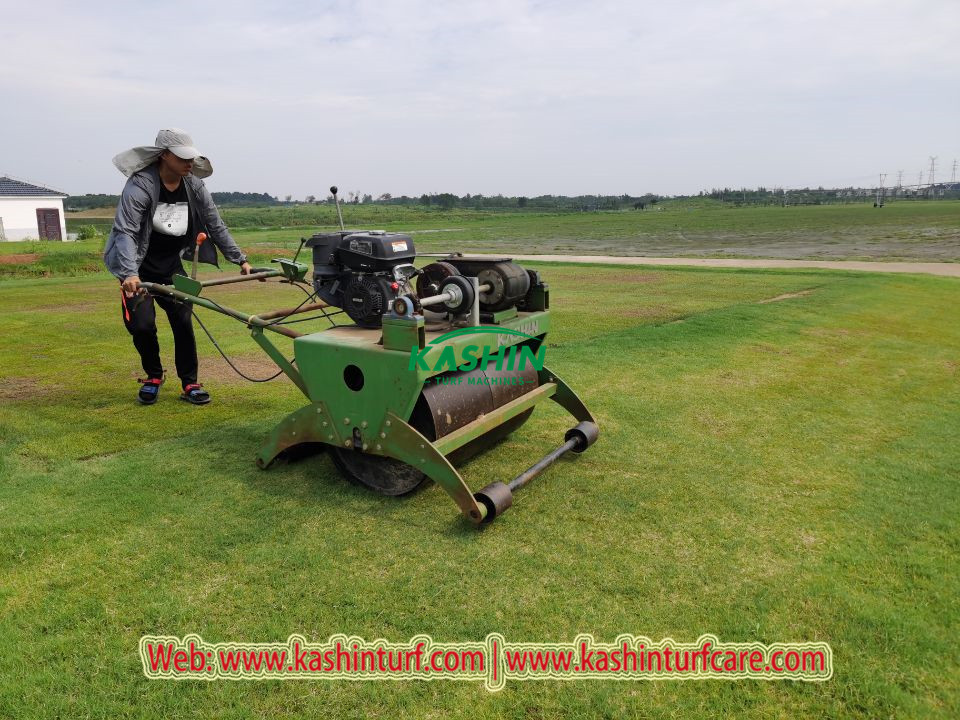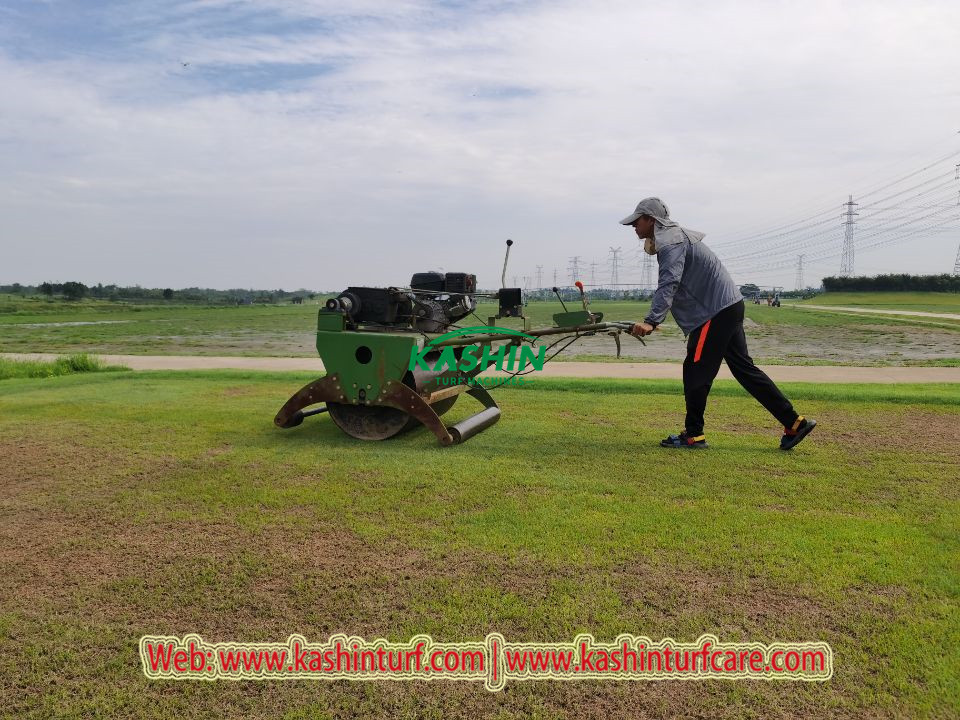(1) The purpose of lawn rolling
Rolling is to roll and press on the lawn with a pressing roller. Moderate rolling is beneficial to the lawn, especially in cold areas, to obtain a smooth lawn, rolling in the spring is very necessary. Rolling can improve the flatness of the lawn surface. But it will also bring about problems such as soil compaction, so we must carefully consider different situations and treat them in specific situations.
① Rolling after sowing can level the bed, improve the contact between seeds and soil, and improve the regularity of seed germination.
② Rolling after planting makes the roots of the lawn and the bed tightly combined, which is easy to absorb water to produce new roots to facilitate the planting of the lawn.
③Appropriate rolling can effectively promote the elongation of tillers and stolons and inhibit vertical growth. Shorten the internodes and make the lawn dense and smooth.
④ Rolling before drafting can obtain a uniform thickness of turf, which can reduce the quality of turf and save transportation costs.
In addition, rolling can modify the ground and improve the lawn landscape. For example, it can increase the hardness of the sports field lawn, make the field flat, and improve the use value of the lawn; by rolling, the surface of the lawn soil can be made uneven due to the freezing of winter and spring, and caused by the activities of earthworms, ants and other animals. The occurrence of mounds is effectively improved; rolling in different directions can also form lawn patterns and improve the landscape effect of lawns.
(2) The working principle of turf roller
Turf rollers are generally made of steel or cast iron and have a certain width and diameter. Some turf rollers are composed of two parts in the width direction, so that the two rollers can have different speeds when turning, to avoid or reduce the slippage caused by the uncoordinated rolling speed of the turf roller in the direction of the turning radius when turning. Damage. There are several types of turf rollers, such as hand push type, stepping self-propelled type and tractor traction type.
Most turf rollers have counterweight devices, and counterweights such as cement blocks, sandbags or cast iron blocks can be placed on the counterweight device according to the requirements of lawn rolling compaction. Some turf rollers are sealed, and water, sand, small cement blocks, etc. are used as counterweights and placed into the roller through the placement holes on the side of the roller to increase the quality of the turf roller. It is ideal to use water as the counterweight of this turf roller, and adding or subtracting the counterweight is easier to operate.
Generally, the rolling width of the turf roller is 0.6 to 1m, and it is towed by a walk-behind machine or a ride-on vehicle. Wider and larger turf rollers are towed or suspended by large tractors, and their width is at least 2m or more. The quality of turf rollers ranges from 250kg for small hand-push type to 3500kg for large tractor-pull type.
(3) Use of sod roller
①The choice of rolling machine. Rolling can be rolled manually or mechanically. The motorized roller is 80-500kg, and the hand-push wheel weighs 60-200kg. The pressure rollers include stone rollers, cement rollers, hollow iron rollers, etc. The hollow iron rollers can be filled with water, and the quality can be adjusted by adjusting the amount of water. The quality of rolling depends on the number and purpose of rolling. For example, it is better to press less times (200kg) for dressing the bed surface, and lightly press (50-60kg) if the seeds are in close contact with the soil after sowing. It should be avoided that the strength is too high to cause soil compaction, or the strength is not enough to achieve the expected effect.
② Rolling time. Turfgrass should be rolled during the growing season, cold-season turfgrass should be used in spring and autumn seasons when turf grows vigorously, and warm-season turfgrass should be used in summer. Other rolling time usually depends on the specific situation, such as rolling on the bed preparation, after sowing, before drafting and after turf planting, and rolling on the lawn before and after the game, and areas with frozen soil. Roll it after thawing in spring.
③Precautions when rolling.
a. The lawn grass is not suitable for rolling when it is weak.
b. Try to avoid high-strength rolling on moist soil to avoid soil compaction and affect the growth of lawn grass.
c. Avoid heavy pressure on the soil that is too dry to prevent the lawn from compacting.
d. It should be carried out in combination with management measures such as drilling, dredging, fertilizing and sand covering.
When is the lawn rolling generally carried out
In the northern regions, in the cold winter, the soil freezes for a long period of time, and as the weather warms in early spring, there is a time of night freezing and daily melting.
When earthworms create many holes in the lawn, and at the same time accumulate a lot of excrement on the soil surface, the soil surface forms many uneven mounds, which destroys the flatness of the lawn and directly affects the quality of the lawn.
Rolling is not suitable for lawns that are not growing vigorously, and that the soil is too dry or too wet.
Post time: Jan-24-2024


